Passive sun & shade harvesting case study—Willow Bend
Willow Bend Environmental Education Center.
Flagstaff, Arizona.
Latitude 35.2˚ N.
Elevation 6,911 feet (2,107 m).
Average high temperature 61.2˚ F (16.2˚ C). Record high 99˚ F (37.2˚ C).
Average low temperature 31.1˚ F (-0.5˚ C). Record low –30˚ F (-34.4˚ C).
Average annual rainfall 20.65 inches (524 mm)
Compare the winter solstice images and passively heated interior temperatures to
the summer solstice images and passively cooled interior temperatures below…
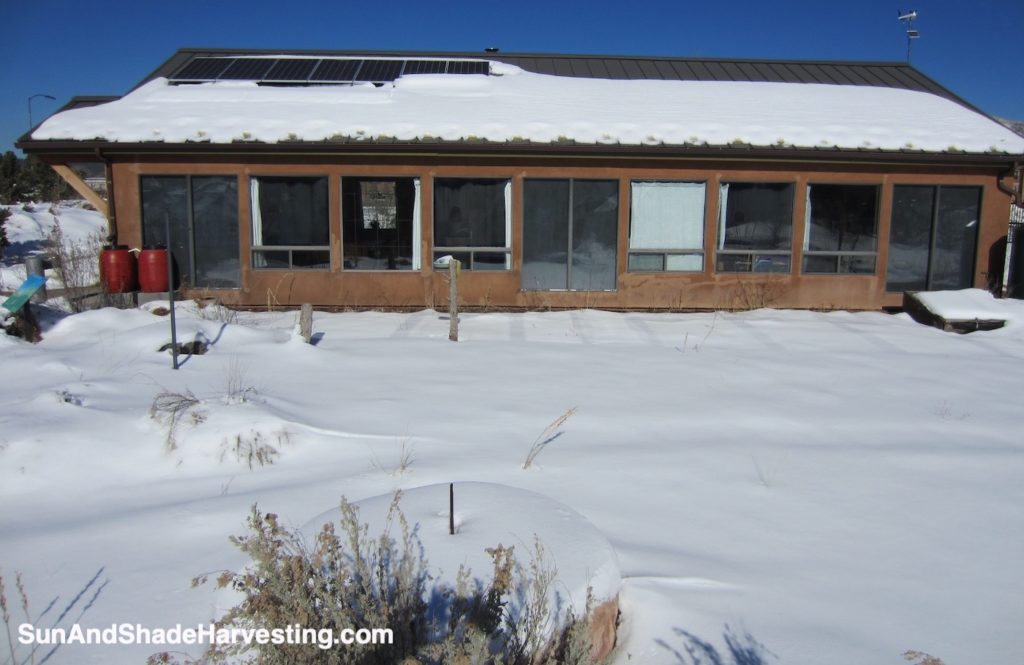
Exterior of Willow Bend Environmental Education Center
The orientation of the building is ideal for passive-solar heating and lighting because the longest wall area faces south/equator, and thus the winter sun. In addition, the roof overhang lets in the full solar exposure of the low winter sun through south-facing windows and onto south-facing trombe walls. Longest “windows” are trombe walls. Photo was taken standing due south of the building. Photo: Rusty Tweed.
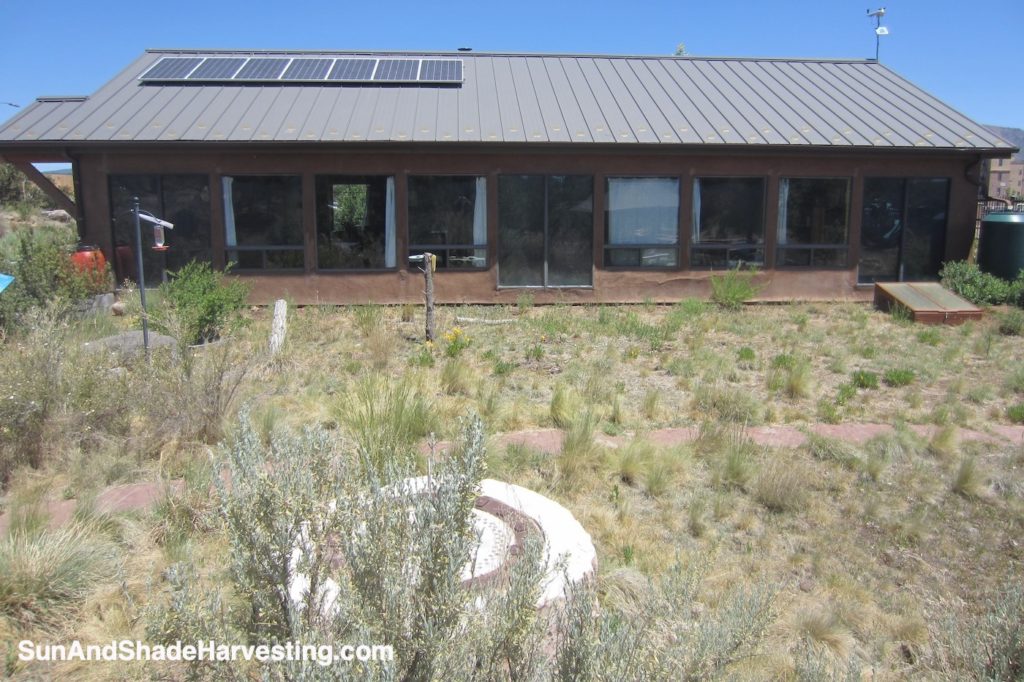
Exterior of Willow Bend Environmental Education Center.
The orientation of the building is ideal for passive-solar shading and cooling, as the short east- and west-facing walls face the rising and setting sun in the hot months. The natural roof overhang shades out the majority of the noonday sun (high in the southern half of the sky) from the long south-/equator-facing wall. Photo was taken standing due south of the building. Photo: Rusty Tweed.
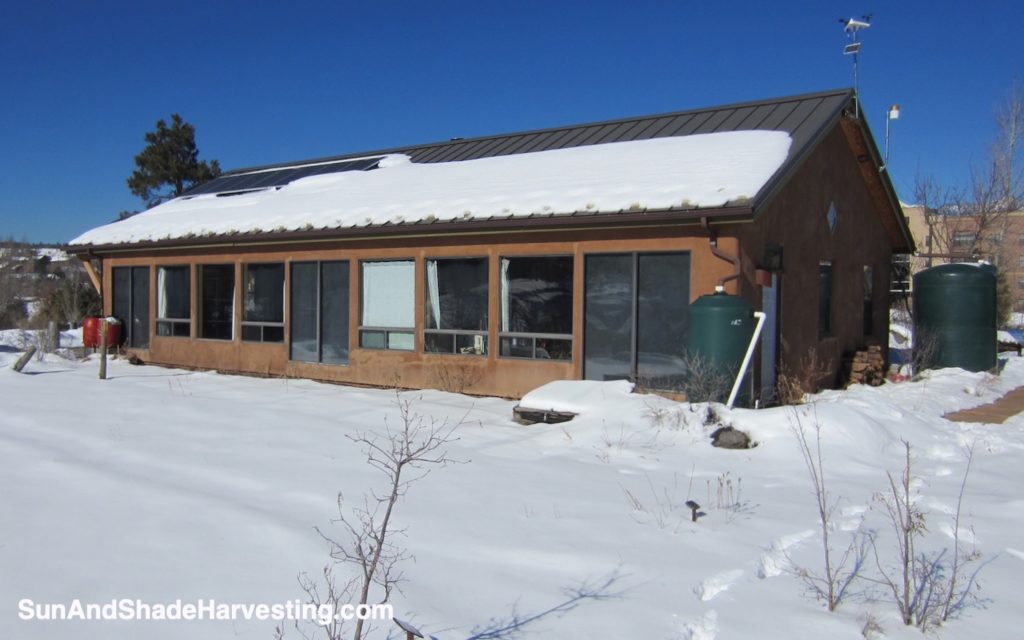
This building has the ideal solar orientation for passive-solar heating and cooling. It is on an east-west axis, meaning the long walls run east-west, one facing the winter sun to the south, and one facing north. The short walls face east and west, and thus the rising and setting sun in the hot months. Photo: Rusty Tweed.
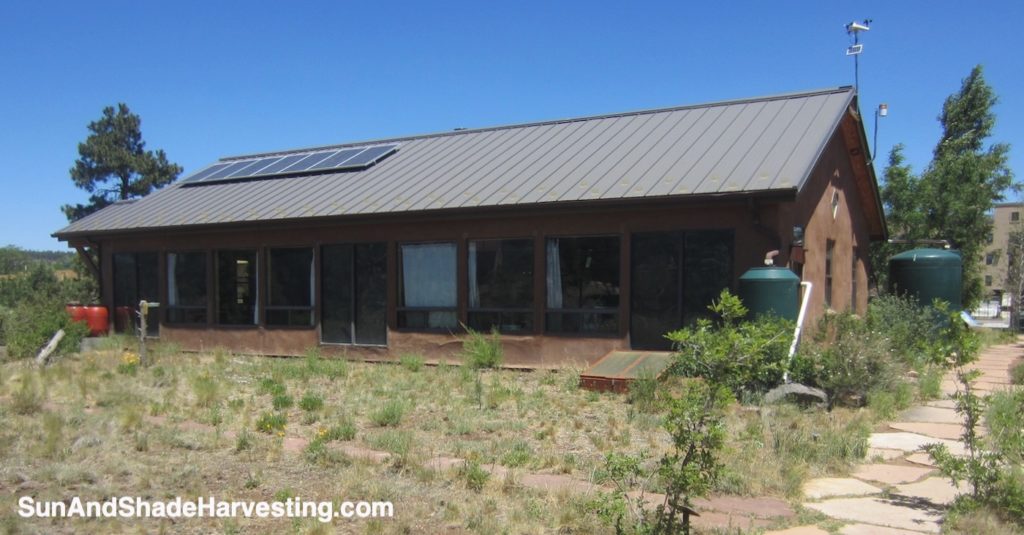
This building has the ideal solar orientation for passive-solar heating and cooling. It is on an east-west axis, meaning the long walls run east-west, one facing the winter sun to the south, and one facing north. The short walls face east and west, and thus the rising and setting sun in the hot months. Photo: Rusty Tweed.
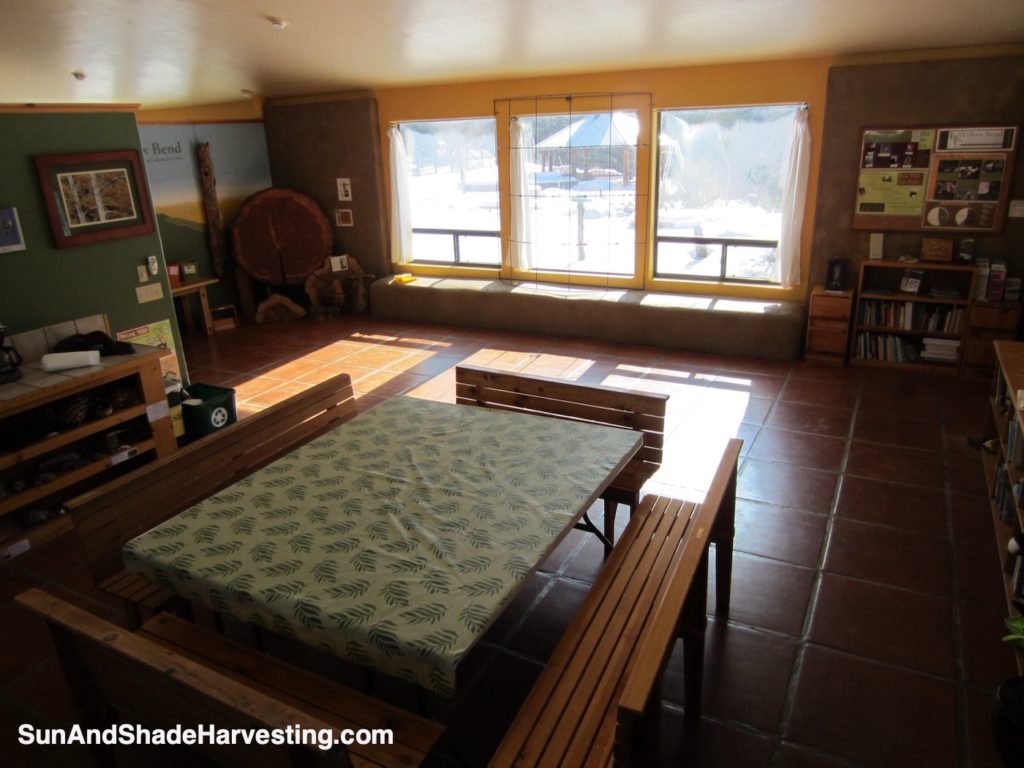
Interior of Willow Bend Environmental Education Center.
Note how far the direct sun enters the room through the building’s windows, passively and freely heating up the mass of the floor. This is because the south-facing roof overhang was correctly sized in relationship to the south-facing windows’ size and placement, thereby optimizing winter-sun exposure, while maximizing summer-sun shading.
My book, Rainwater Harvesting for Drylands and Beyond, Volume 1, 3rd Edition, shows you how to do this, AND how to choose the correct type of window to maximize desired heating and cooling. Photo: Rusty Tweed.
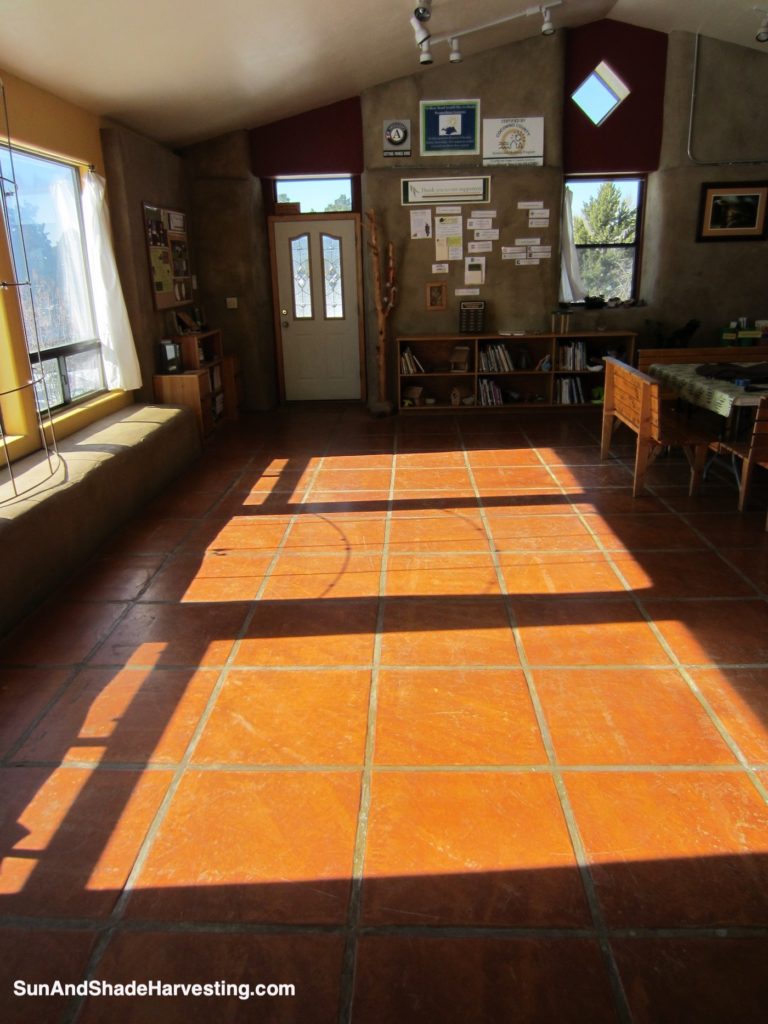
Interior of Willow Bend Environmental Education Center.
Note how far the direct sun enters the room through the building’s windows, passively and freely heating up the mass of the floor. The windows were sized in relationship to the building’s interior mass, and the needed winter heat gain for Flagstaff’s climate.
My book, Rainwater Harvesting for Drylands and Beyond, Volume 1, 3rd Edition, shows you how to do this, AND how to choose the correct type of window to maximize desired heating and cooling. Photo: Rusty Tweed.
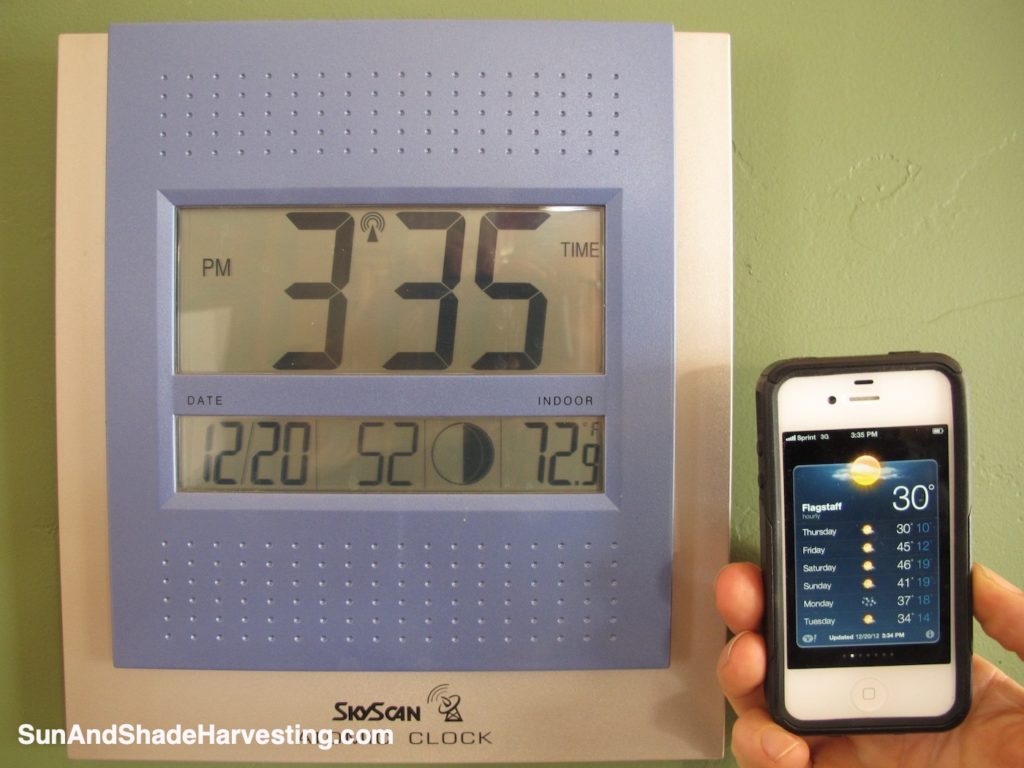
Interior of Willow Bend Environmental Education Center.
Very comfortable interior temperature compared to the below-freezing exterior temperature. The interior warmth is due entirely to the passive-solar heating strategies of the building and the building’s ample insulation.
For times of cold, overcast weather, the building has an efficient wood stove as a backup source of heat. Since the passive-heating strategies work so well, this wood stove is typically used only 6–12 days per year. Photo: Brad Lancaster
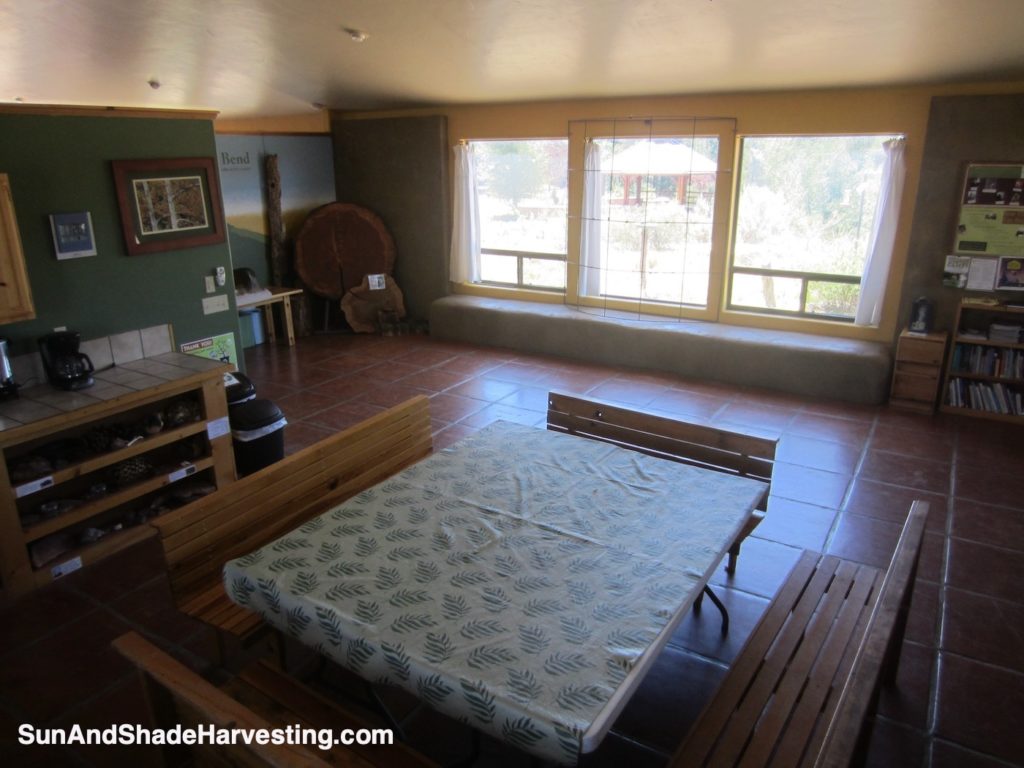
Interior of Willow Bend Environmental Education Center.
Note how no seasonally unwanted direct sun enters the south-facing windows in the hot days around the summer solstice. This is because the south-facing roof overhang was correctly sized in relationship to the south-facing windows’ size and placement, optimizing winter-sun exposure, while maximizing summer-sun shading.
My book, Rainwater Harvesting for Drylands and Beyond, Volume 1, 3rd Edition, shows you how to do this, AND how to choose the correct type of window to maximize desired heating and cooling. Photo: Rusty Tweed.
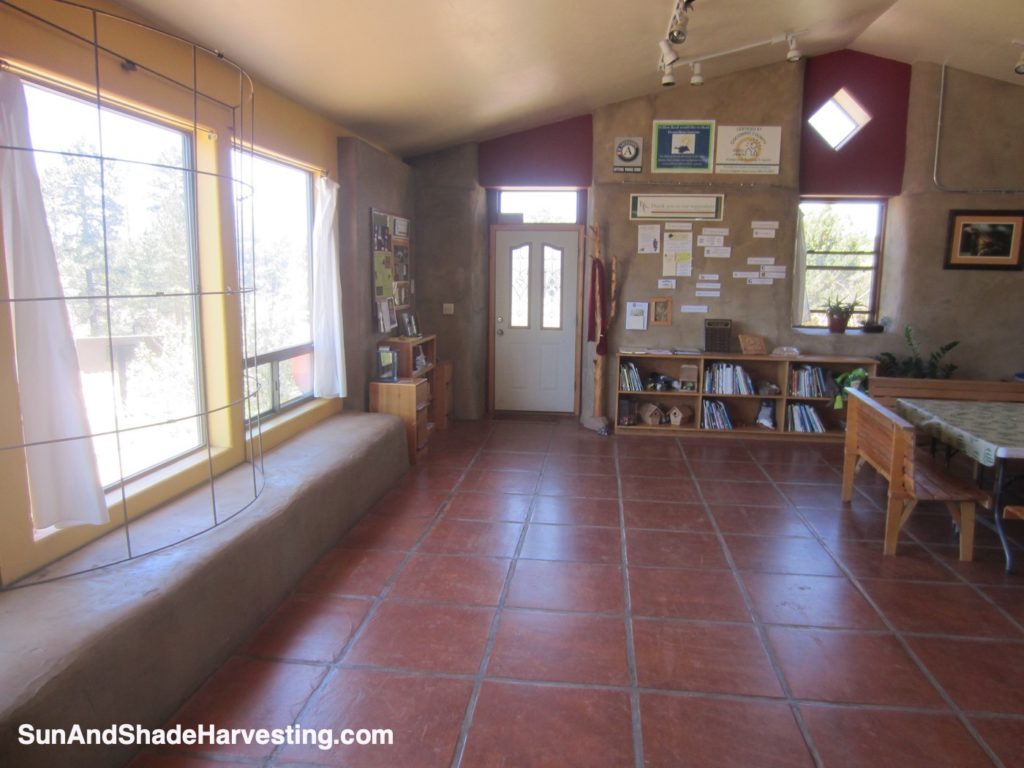
Interior of Willow Bend Environmental Education Center, Flagstaff, Arizona.
Note how no direct sun enters the room through the building’s windows; this passively and freely keeps the mass of the floor cool. The windows were sized in relationship to the building’s interior mass, and the needed winter heat gain for Flagstaff’s climate.
My book, Rainwater Harvesting for Drylands and Beyond, Volume 1, 3rd Edition, shows you how to do this, AND how to choose the correct type of window to maximize desired heating and cooling. Photo: Rusty Tweed.
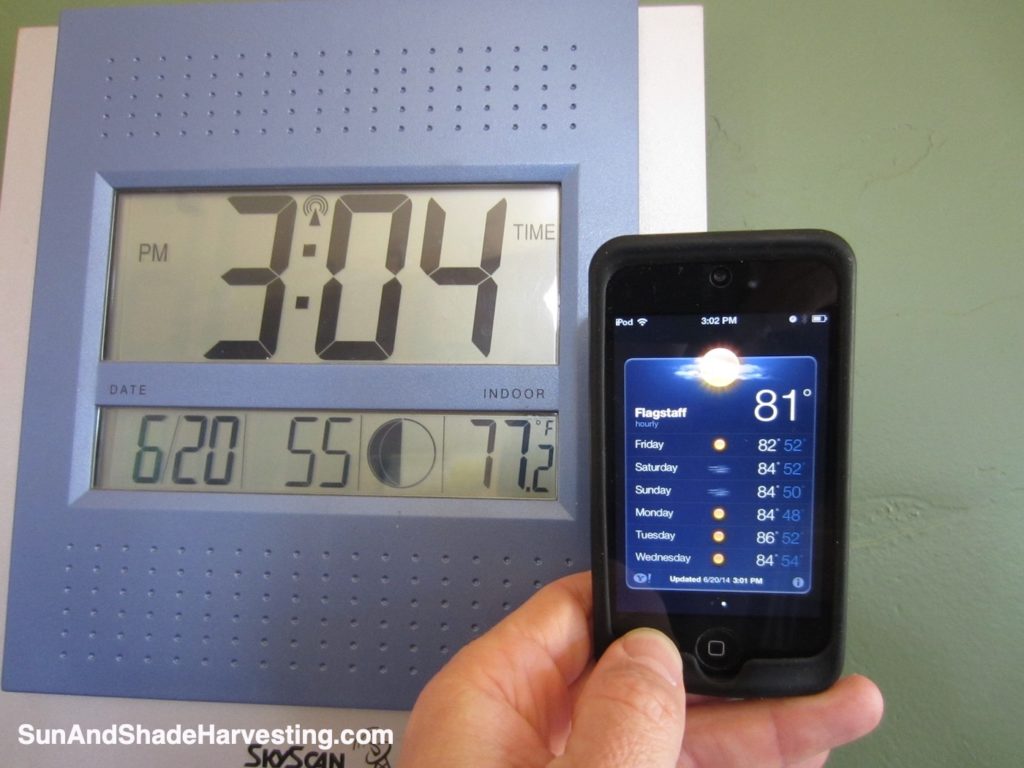
Interior of Willow Bend Environmental Education Center.
Comfortable interior temperature (shown on large display), cooler than the exterior temperature (shown on phone). The cool is due primarily to the passive-solar cooling strategies (roof overhang that shades out direct midday sun, as well as the building’s ample insulation). There is no mechanical cooling of the building. Interior summer temperatures could easily be lowered more if windows, doors, and/or skylight were opened at night to release warmer air out of building. This is not currently done. Another aspect hindering ideal passive cooling of the building is the fact that on summer days some staff working in the building prefer to keep windows and doors open even during the hotter part of summer days. But all still works, even with these practices, because Flagstaff typically does not get as hot as lower elevation sites do. Photo: Rusty Tweed.
For more
information on how to design and implement passive sun & shade harvesting strategies at all latitudes, and irrigate the living ones with free on-site water sources…

Volume 1
Of the two books, this one has the most on passive sun and shade harvesting strategies

